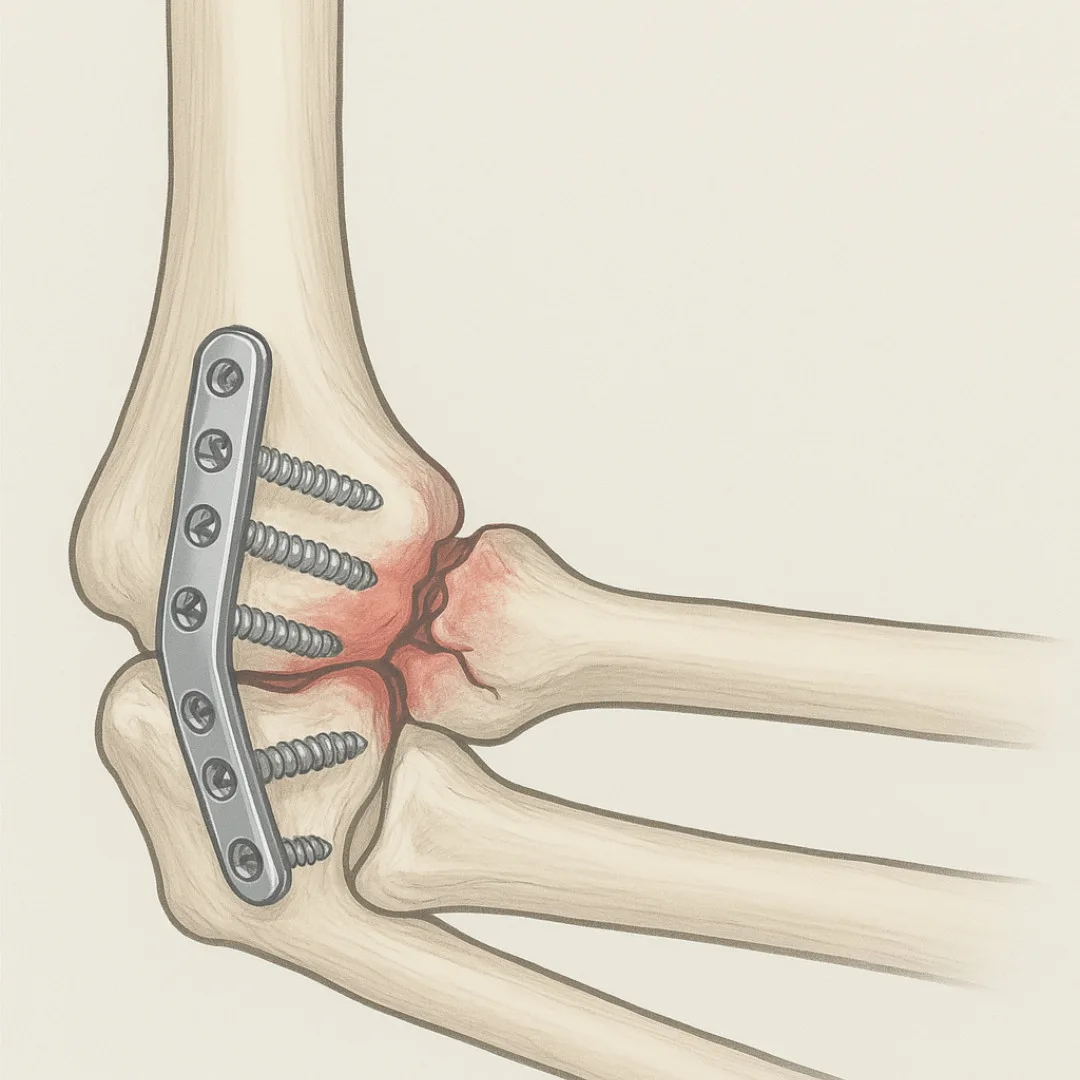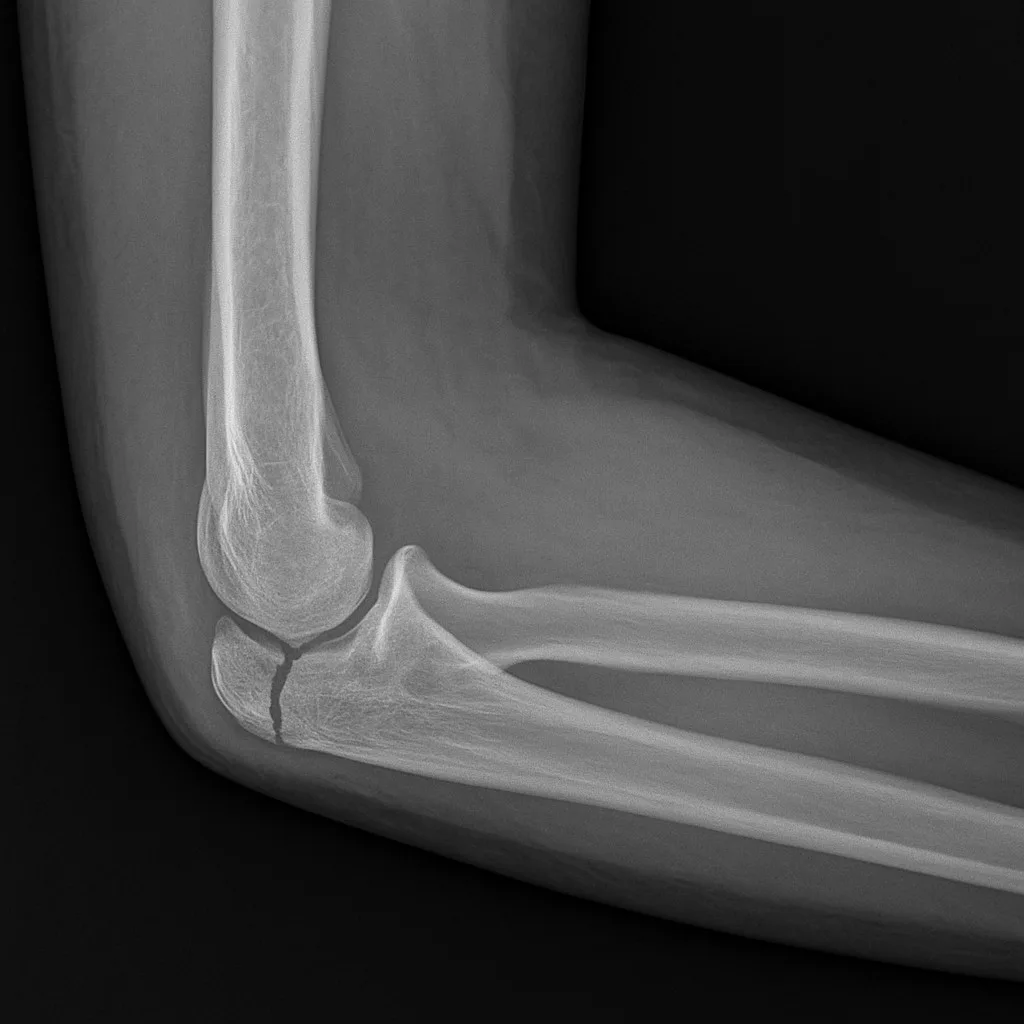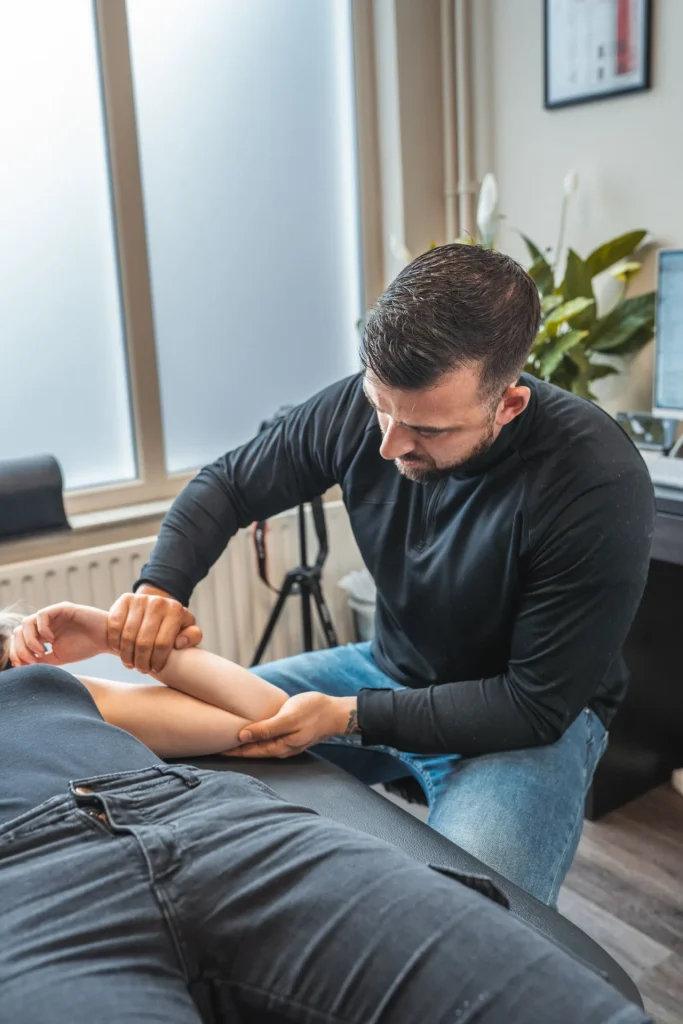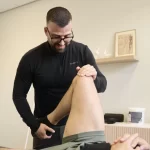Recovery after an Elbow Fracture with Plate and Screws (ORIF): what to expect
A broken elbow... it sounds intense, and it often is. Whether you fell while playing sports, slipped down the stairs or were just stupidly unlucky, an elbow fracture is not only painful, but also has a lot of impact on your daily life. In some cases, surgery is needed where the bone is fixed with plates and screws. We call this a ORIF operation. But what does that actually mean, and what's in store for you during your recovery? In this article, we take you step by step.

How do you actually break your elbow?
Most people suffer an elbow fracture after a big smack on the arm, often when trying to catch yourself in a fall. This can happen while playing sports, in traffic or just at home. Sometimes a hard blow comes directly to the elbow itself.
Depending on where exactly the bone breaks, doctors give it a name: for example, a fracture in the radius bone (radius head fracture), at the tip of your elbow (olecranon) or at the bottom of your upper arm (distal humerus).
In the elderly, it happens more often due to weaker bones (e.g. osteoporosis), while young people usually contract it during an active accident or sporting event.
What do you notice when you have broken your elbow?
It usually starts with a sharp pain immediately after the accident. The elbow swells quickly, turns blue or red, and movement is hardly possible. Even small movements like bending or stretching can be unbearable. Sometimes you can feel the bone 'shifting' or hear a cracking sound when falling. In more severe cases, you may experience tingling or numbness in your hand or fingers - a sign that nerves or blood vessels have also been affected.
How is the diagnosis made?
If you arrive at the emergency room with a painful, swollen elbow, the doctor will first take a close look at your arm and check for nerve damage. Then, X-rays will be taken to see if there is indeed a fracture. Sometimes the fracture is complicated or difficult to see, and then a CT scan will also be taken to get a better picture of it.

To operate or not to operate?
Not every elbow fracture needs surgery. If the bone parts are neatly in place and the fracture is stable, a period of rest and a sling or splint is often sufficient. We call this conservative treatment.
But if the bone is significantly displaced, or if the joint is unstable, surgery is usually required. During such an operation - a ORIF - the surgeon puts the bone back in place properly (open reduction) and fixes it firmly with metal plates and screws (internal fixation). This restores strength and straightness to the elbow, allowing it to heal properly and allow you to use the arm normally later.

What happens after surgery?
After surgery, you will usually be given a sling or splint to protect your elbow. You may rest your arm for the first few days, but it is important to start moving carefully soon - on the doctor's or physiotherapist's advice. This will help prevent stiffness. You will often be given exercises for your hand and wrist to keep them supple.
After a few days to weeks (depending on the strength of the fracture), you will start supervised physiotherapy to get your elbow moving again step by step.
How is recovery going?
Recovery proceeds in several stages. In the beginning, it is all about rest, pain relief and getting mobility going. Later, the focus shifts to strength and coordination.
The first 2 weeks rest mainly, let the wound heal and do light movements with your fingers and hand.
After 2 to 6 weeks start bending and stretching the elbow carefully. Don't lift heavy things yet, but learn to perform the movements properly again.
Between weeks 6 and 12 start exercising more and more actively, including light strength training.
After 3 to 6 months you can resume your normal daily activities in many cases. Sports or heavy work may take a little longer, depending on how complex the fracture was.
Does permanent disability sometimes remain?
Although many people recover well, it is important to note that an elbow fracture rarely heals completely without residual symptoms - especially with the more complex fractures or if the elbow has not been moved for a long time.
In simple fractures, such as a non-displaced radius head fracture treated without surgery, the outlook is often favourable. People usually keep little from this, especially with proper management.
In more severe injuries - such as a complicated distal humerus fracture or a crushed olecranon fracture - the risk of residual disability is higher. Even after surgery with ORIF, you may:
- Not regaining full extension or flexion
- Difficulty turning your forearm completely (e.g. when opening a jar)
- Experiencing less strength when pushing or lifting
- Pain continues to be felt with certain movements, especially overexertion
Sometimes a difference remains between the affected arm and the healthy side, especially in situations where you ask a lot of your elbow - such as athletes or people with physical work.
In some cases, metal plates or screws can also cause symptoms, for example when pressure is applied to the elbow. These can be removed later (often after 6-12 months) if necessary.
So it is important to have realistic expectations: the goal is the best possible functional arm, but 100% back to "as before" is not always feasible. However, proper rehabilitation can make a huge difference.

Together strong in rehabilitation: ETZ's Trauma Network
At ETZ, extra attention is paid to patients recovering from a (complex) bone fracture. This is because the hospital is part of a specialised trauma network, which was set up to continuously improve the quality of care around this group of patients. Within this network, there is intensive cooperation between surgeons, rehabilitation doctors and specialised physiotherapists to provide the best possible support for the recovery process.
Our practice employs several physiotherapists who are members of this trauma network. This means we know exactly what is needed after an operation such as an ORIF to the elbow, and can coordinate closely with the doctors treating you in hospital. So together, we ensure the best possible guidance and a recovery path that really suits your situation.

In conclusion
An elbow fracture is drastic, but with the right treatment and guidance, good recovery is possible. Surgery with plates and screws helps the bone heal properly and restore the arm's functionality. Still, you should be aware that not every fracture heals perfectly - in some people, some stiffness or loss of strength remains.
Get proper guidance, work on your recovery step by step and give your body the time it needs. And in doubt along the way about how things are going? Then it is always wise to discuss this with your doctor or physiotherapist.

Related complaints

Throwing elbow
In a pitcher's elbow, there is particularly pain on the inside of the elbow.

Tennis elbow (Epicondalgia lateralis)
Tennis elbow is an overuse syndrome of the extensors in the wrist
